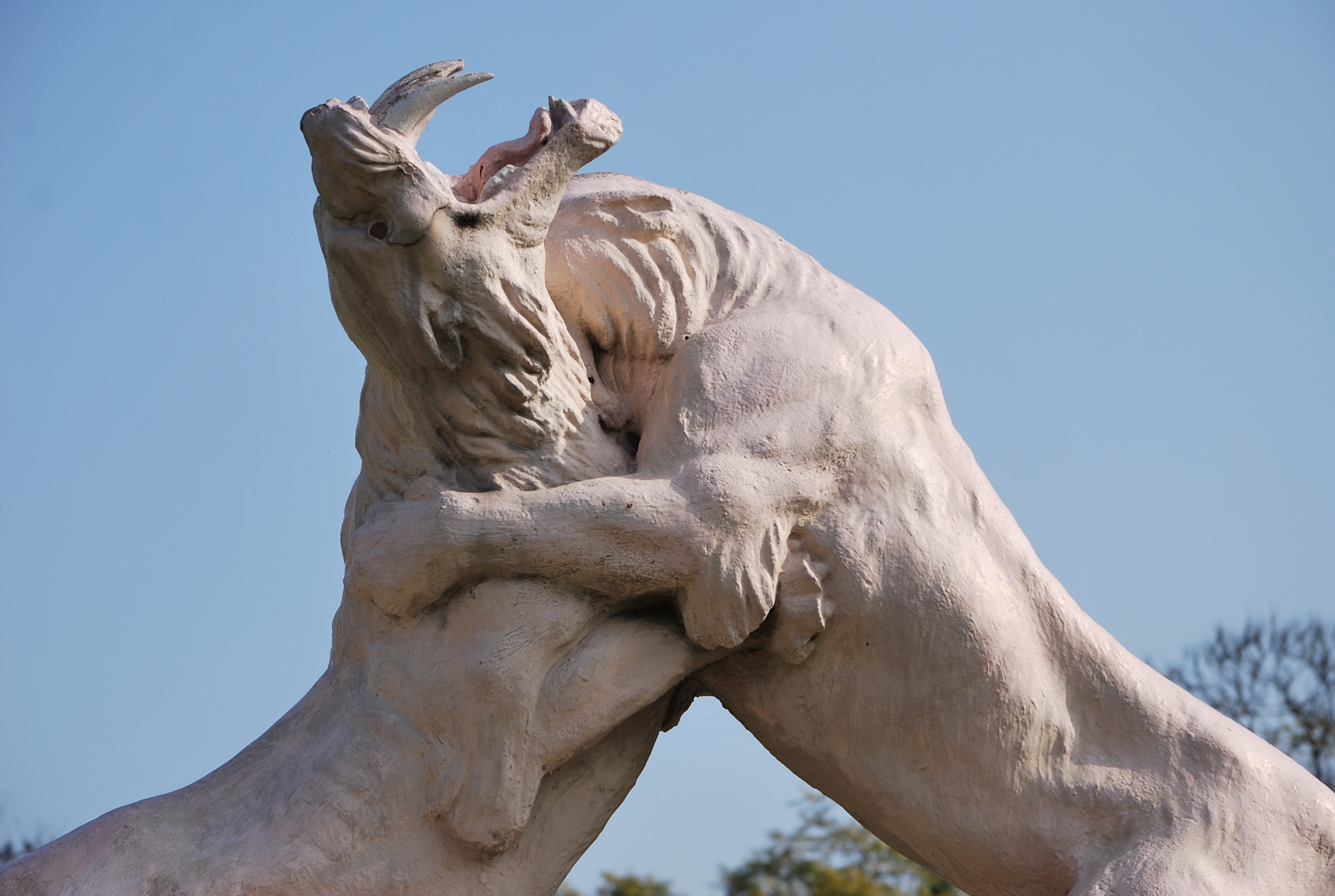The last of the great sabercats died out with the close of the Ice Age. Their disappearance ended 23 million years of cats with impressively long canines. So long, Smilodon. Hasta la vista, Homotherium. But these fierce felids weren’t the only animals to evolve saber fangs.
Long before the fierce felids were creodonts – a totally extinct group of mammalian carnivores – and the earliest true sabercats, known as machairodonts by researchers, overlapped in time with more closely-related pseudo-cats called nimravids. There was even a marsupial sabertooth named Thylacosmilus. Yet, whether creodont or marsupial, nimravid or machairodont, paleontologists have struggled to understand sabertoothed predators because these carnivores left no descendants. For the first time in millions of years, our world is missing saber-fanged superpredators.
But there may be sabertooth facsimiles. Two very different mammals may allow researchers to catch a fleeting glimpse of how long-fanged predators hunted and struck their prey.
In 2006, anatomist Per Christiansen proposed that living clouded leopards independently evolved aspects of their teeth, skulls, and biting abilities that are quite similar to those of true sabercats. The clouded leopard isn’t exactly a modern Smilodon, Christiansen cautioned, but the anatomy of the mid-sized cat is reminiscent of the extinct felids. Other researchers have since questioned this suggestion. Even though clouded leopards have elongated canines, studies by other experts didn’t find the same evidence for the mid-sized cats as good sabertooth analogs. Whether the clouded leopard will help paleontologists get a better handle on how sabertoothed predators sliced the throats of their megafaunal prey is unknown.
But there’s another unexpected contender for the title of living sabertooth. It’s the southern short-tailed opossum, Monodelphis dimidiata. The males of this little mammal species, the largest of which weigh only about a third of a pound, have the canines and powerful arms seen in some prehistoric sabertooths. At small size, at least, sabertoothed predators may still live.
Rudemar Ernesto Blanco of Uruguay’s Universidad de la República and colleagues make the case for the sabertoothed opossum in a new Journal of Zoology study. From skull measurements previously devised to compare sabertooths, the researchers found that male southern short-tailed opossums have canines that are long enough in proportion to their skull to overlap in the sabertooth category and that the little marsupials also have exceptionally wide gapes. The opossums weren’t quite like the famous Smilodon, but they did resemble the relatively shorter-fanged sabercat Homotherium and the nimravids Eusmilus and Barbourofelis.
The resemblance went beyond the skulls. Saber fangs are both deadly and delicate. Biting indiscriminately into struggling prey is a quick and painful way to break a canine. That’s why paleontologists expect that prehistoric sabertooths often wrestled with their prey first, turning their victim to get their mouths in position for a devastating bite through the soft tissues of the neck. Sabercats such as Smilodon, especially, have robust forelimbs where burly muscles attached in life. The opossum’s bones show something similar. Compared to other predatory marsupials, at least, male southern short-tailed opossums have thick and expanded upper arm bones for greater muscular power.

Together, those powerful arms and saber teeth are critical when male southern short-tailed opossums compete for mates. The male opossums only get one chance to reproduce before they die, Blanco and colleagues explain, and they fiercely battle each other by bearing their canines and tussling in fierce little slap fights. These battles are probably why the canines of the female opossums are not quite so long – sexual selection drove the species to become sexually dimorphic. And if the opossums are good models for prehistoric sabertooths, the connection between their fangs and sexual dimorphism might provide researchers with new clues about how these exceptional dental knives evolved over and over again.
But the male opossums also make good use of their arms and teeth while hunting. Aside from plants and invertebrates, southern short-tailed opossums regularly prey on rodents. And the males, at least, seem to have a very sabercat-like strategy for bringing down their prey. Based on previous observations by other researchers, Blanco and coauthors write that “In the case of killing mice larger than itself, the bite [of the southern short-tailed opossum] is described as a single ‘neck bite’ delivered after a long struggle with the forelimbs.” Even though the sabertoothed males use their arms and fangs in dire competition with each other, the same features are so critical for feeding that they need to remain functional. Their grip and bite technique might represent a real connection between having long, piercing canines and strong arms to manipulate prey for a better bite.
Can sabertoothed opossums provide paleontologists with a way to envision long-fanged prehistoric predators? Maybe. Blanco and coauthors admit there is much left to learn about the anatomy, behavior, and ecology of the opossums, but such efforts are a matter of time and attention. “In the case of M. dimidiata its manageable size makes it a very suitable species to be studied further in captivity,” Blanco and colleagues write. Imagine that. A lab of small sabertooths.
Reference:
Blanco, R., Jones, W., Milne, N. 2013. Is the extant southern short-tailed opossum a pigmy sabretooth predator? Journal of Zoology. 291: 100-110

